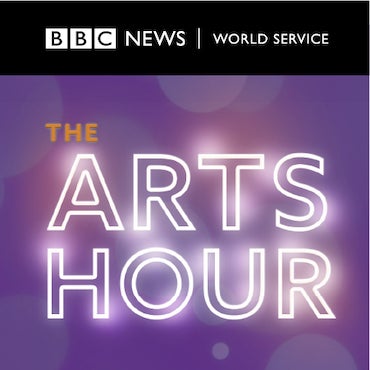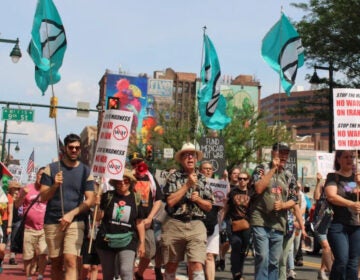Residents brainstorm comprehensive ‘district plan’ for Northwest Philly neighborhoods’ future
Hundreds of Manayunk, Roxborough and East Falls residents helped to plan for the future of their neighborhoods during a Monday night meeting at William Penn Charter School.
Gathered around street maps of their communities, they used their voices and felt-tipped markers to illustrate both destinations and physical barriers within the neighborhoods.
Attendees also shared their thoughts about future development to facilitators from the Philadelphia City Planning Commission (PCPC), who hosted the public meeting as part of the rollout of a “District Plan” for the Lower Northwest section of Philadelphia.
This district plan is part of the PCPC’s efforts to construct a comprehensive development plan for the city, known as “Philadelphia 2035.”
Built upon a process that integrates zoning and city planning, the project’s ultimate goal is to make the city and its neighborhoods more livable and economically viable.
Down to brass tacks
The development of district plans for 18 sections of Philadelphia is actually the second phase of Philadelphia 2035.
The first phase, known as Citywide Vision, developed broader policies and recommendations. It was adopted by the PCPC in June 2011.
Now, the PCPC seeks to tailor Citywide Vision’s broad recommendations to the individual districts’ unique needs and characteristics.
The Lower Northwest District Plan, which is the eighth district plan to date, encompasses all of Roxborough and Manayunk, along with segments of East Falls north of Route 1.
Matt Wysong, Northwest community planner for PCPC, explained that district plans seek to address a host of issues. They include growth management, housing and economic development, land conservation, zoning remapping, transit and transportation, capital spending and historic preservation.
Wysong emphasized that the plan will not address issues related to taxes, AVI, schools, Licenses and Inspections and public safety.
Lower Northwest specifics
In order to understand how the broad brushstrokes of the Citywide Vision apply to the Lower Northwest, Wysong described the area’s attributes.
Driving growth in East Falls, Roxborough, and Manayunk is the so-called Millennial generation, the age group between 20 and 44 whose presence increased by 26 percent since 1980.
These young professionals, along with a rising numbers of those aged 65 and older, are presumably drawn to the area by its unique access to Center City and suburban employee centers, its five miles of waterfront and the 31 percent of the area which is dedicated to parks and/or open space.
The Lower Northwest’s estimated 51,000 residents were described by Wysong as “solidly middle-class,” with income levels double the level of the city as a whole.
One demographic not seeking solace in the Lower Northwest is the school-aged (those under the age of 20). Those numbers have dropped by 45 percent since 1980.
While the Lower Northwest is among the healthiest segments of the city overall, PCPC Healthy Community Coordinator Keith Davis said Monday that the agency will integrate goals set by the city’s Health Department as part of the district plan.
“The Lower Northwest, compared to the rest of city, compares fairly well in terms of health indicators,” Davis said. “It’s definitely a district of choice.”
Zoning and commercial corridors
More than 60 percent of East Falls, Roxborough and Manayunk is zoned residential; 24 percent of the district is incorrectly zoned including, notably, the Roxborough antenna farm, Philadelphia University and the Queen Lane Reservoir.
Describing the Lower Northwest as a bedroom community, Wysong noted that there are 13 commercial corridors — and 13,800 jobs — in the three neighborhoods.
The Ridge Avenue commercial corridor in Roxborough has a very low vacancy rate, with most segments at more than 85 percent occupancy. This contrasts with the Ridge Avenue commercial corridor in East Falls, which has a 24-percent vacancy rate.
A second East Falls commercial corridor, located on Conrad Street, is 35 percent vacant.
Along with commercial vacancies, four percent of land is vacant and undeveloped. This includes the Shawmont Valley, sections of Upper Roxborough and Venice Island in Manayunk.
“When we look at development on vacant land, it’s more than just development,” Wysong said. “It’s also looking at conservation and preservation, and we also have to look at the third factor of environmental concerns, because much of this land is located on steep slopes or within a floodplain.”
What’s coming up?
According to Wysong, the district-planning process runs 10 months. Currently, the Lower Northwest’s plan is in its fourth.
Monday’s meeting was the first of three public sessions set to take place in the Lower Northwest. The next is tentatively scheduled for June somewhere in Roxborough.
Beyond the three meetings, additional public outreach is planned and a steering committee will be created. This group — comprised civic-association members, public officials, institutions and large land-owners — will meet seven or eight times during the planning process.
Wysong suggested that residents voice any concerns about the plan at the meetings or through their respective civic associations.
While the Lower Northwest plan is gaining steam, a district plan for the Upper Northwest, which extends from Chestnut Hill to Germantown, has not yet been devised.
Wysong told NewsWorks that there is no set schedule for the 10 remaining district plans, but with four plans being undertaken per year, he said he expects the project to conclude within the next two and a half years.
WHYY is your source for fact-based, in-depth journalism and information. As a nonprofit organization, we rely on financial support from readers like you. Please give today.








